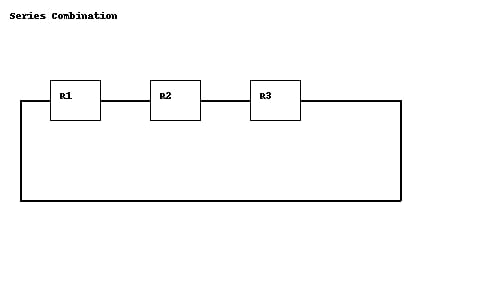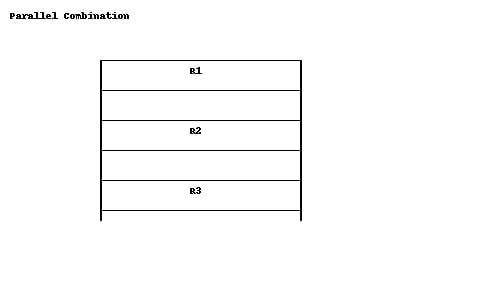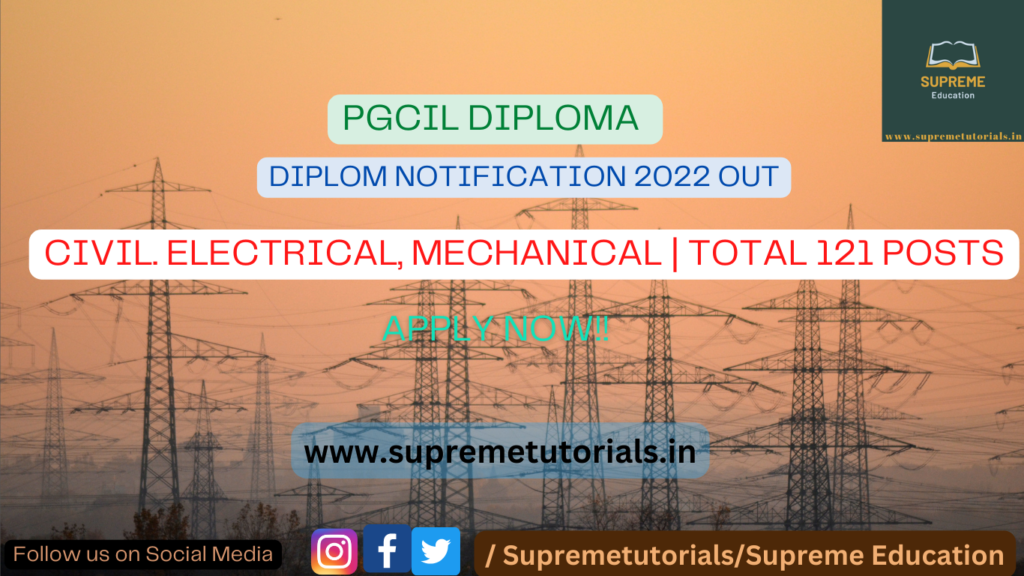Class 10 CBSE Physics notes|Electricity Notes Pdf download is very crucial and important for class X students who will sit in their board exam very first time this year .For the same scenario the all the notes of this chapter is designed in keep in mind that they will learn and memorise this chapter very easily.
Here’s a full detailed set of Class 10 CBSE Physics notes on the chapter “Electricity“, including explanations, formulas, diagrams, and NCERT questions with answers at the end.
Video Tutorial of Electricity Chapter Class X
Chapter: Electricity – Class 10 Science (Physics)
Class 10 CBSE Physics notes|Electricity Notes Pdf download
CBSE Board – Detailed Notes with Diagrams and NCERT Solutions
This chapter Electricity is very crucial chapter for the students who want to get enroll themselves in engineering or any higher studies like medical or NEET or any higher studies ,if we specified say so Engineering branches such as Electrical Engineering & Electrical Engineering appliances like Transformer, Electric Motors, Electric Generators, Electronics Engineeering and many others so for the same scenario this chapter is goinng to play a vital crucial role in their Foundation building so read the fully chapter that we are giving here to boost your basics and concepts.
Lets start with some Basic Definitions and Terminology'
1. Electric Current and Circuit
Electric Current (I)
Definition: “The rate of flow of electric charge is called electric current.”
Formula:
I = {Q}/{t}
I= Current (in Amperes),
Q= Charge (in Coulombs),
t= Time (in seconds)
Unit of Current: Ampere (A)
1 Ampere = Flow of 1 Coulomb of charge per 1 second.
2. Electric Potential and Potential Difference
2. Electric Potential and Potential Difference
Electric Potential (V)
Definition: Work done to bring a unit positive charge from infinity to a point in the electric field.
Potential Difference
Definition: Work done in moving a unit charge between two points.OR
The work done to carry a charge from infinity to a definite point is Known as Potential or Voltage.It is also known as Electric Pressure
Formula:
V = {W}/{Q}
V= Potential Difference (Volt),
W = Work Done (Joule),
Q= Charge (Coulomb)
Unit of Potential Difference: Volt (V)
3. Electric Circuit
A closed path in which current flows.
Open circuit: Current does not flow.
Circuit Diagram Symbols:
4. Ohm’s Law
Statement:
“The current flowing through a conductor is directly proportional to the potential difference across its ends, provided the temperature remains constant.”
Formula:
V = IR
v= Potential Difference (V),
I= Current (A),
R= Resistance (Ω)
Graph of V vs I:
A straight line shows that current is directly proportional to voltage.
5. Resistance (R)
Definition:
The opposition offered by a material to the flow of electric current.
Unit: Ohm (Ω)
Factors affecting Resistance:
R = rho {l}/{A}
Rho= Resistivity,
l= Length,
A= Area of cross-section
6. Resistivity (ρ)
Definition: Resistance of a unit length and unit area of a material.Resistivity only depends upon the material of the conductor no matter what is the length,size and cross section area is.
Unit: Ohm metre (Ω·m)
Depends on: Nature of material only.
7. Series and Parallel Circuits
Series Combination:
When the two or more than two Resistance are connected to each other in such a way that the first end of the resistor is on voltage source end and another end is connected with the other Resistor and the goes on, so such kind of arrangement is called the Series Combination Of Resistance.
In the series sequence of Resistance Current Reamins the same while Voltage divided in per phase of the load as per distribution.
Total Resistance:

R = R1 + R2 + R3
In the series combination of the Resistance Voltage get Divided while the current remains Same or similiar.
Class 10 CBSE Physics notes|Electricity Notes Pdf download
Parallel Combination:
Total Resistance: 1/R
{1}/{R} = {1}/{R1} + {1}/{R2} +……

Current: Divided.
Diagram – Series vs Parallel:
8. Heating Effect of Electric Current
Formula: H = I2.R.t (by using joule’s law)
H = I2.R.t
H= Heat produced (Joule),
I = Current (A),
R = Resistance (Ω),
t = Time (s)
Applications:
Electric heater, iron, bulb, fuse
9. Electric Power
The work done by electric charge in a given time period is known as Electrical Power
Class 10 CBSE Physics notes|Electricity Notes Pdf download
by using
Formulae: P= V.I = I2.R = V2/R
P= Power (Watt)
Unit: Watt (W),
1 kilowatt (kW) = 1000 W
Electrical Energy:
Electrical Energy:
{Energy} = P times t
Commercial Unit: kilowatt-hour (kWh)
1 kWh = 1000 W × 3600 s = 3.6 × 10⁶ Joules
AC(Alternating) & DC(Direct Current)
Alternating Current – Alternating Current is a kind of electric current in which electricity flows sinusoidally in both directions simultaneously. it means it flows positive direction in a half cycle and it flows negative direction in the second half.
Direct Current – “Direct current is that kind of Electricity in which Charges flow in unidirectional movevement of the Oscillation. It means it flows in one direction only at a time.”
Direct current has no frequency at all beacause of no variation in cycle .That’s why we say that Direct current has Zero frequency
Comparison Of AC & DC – Comperative Study of Alternating Current & Direct Current
| Factors | Alternating Current | Direct Current |
|---|---|---|
| 1. Flow of current | Flow of current changes direction periodically | Flow of current is in one constant direction |
| 2. Frequency | Frequency is 50 Hz (India), 60 Hz (USA) | Frequency is zero |
| 3. Generation | Produced by generators and power stations | Produced by batteries, solar cells, etc. |
| 4. Transmission | Can be easily transmitted over long distances | Difficult to transmit over long distances |
| 5. Voltage | Voltage can be increased or decreased using a transformer | Voltage can’t be changed easily |
| 6. Uses | Used in homes, industries, and appliances | Used in mobile phones, laptops, vehicles |
| 7. Safety | Safer at low voltages but more dangerous at high voltages | Generally safer and more stable |
| 8. Efficiency | More efficient for long-distance power supply | Less efficient for long-distance supply |
| 9. Losses | Can cause more heat and losses in small devices | Ideal for low-voltage, precision devices |
| 10. Waveform | Represented by a sine wave in diagrams | Represented by a straight line in diagrams |
NCERT Exercise Important Questions with Answers – Class 10 CBSE Physics Electricity Chapter
Q1. What does an electric circuit mean?
Answer: A closed conducting path through which current can flow is called an electric circuit.
Q2. Define the unit of current.
1 Ampere is the current when 1 Coulomb of charge flows through a conductor in 1 second.
Q3. Calculate the number of electrons constituting one coulomb of charge.
Answer: We know that Q = n.e Or n= Q/e
Charge of one electron =
n ={1}/{1.6 \times 10^{-19}} = 6.25 \times 10^{18} { electrons}
6.25 ×1018 Electrons.
Q4. Name a device that helps to maintain a potential difference across a conductor.
Answer: Cell or battery.
Q5. What is meant by saying that potential difference between two points is 1V?
It means 1 Joule of work is done to move 1 Coulomb of charge between those two points.
Q6. How much energy is given to each coulomb of charge passing through a 6V battery?
W = V times Q = 6 times 1 = 6 { Joules}
W = V .Q
Q1. What does an electric circuit mean?
Answer: A closed conducting path through which current can flow is called an electric circuit.
Q2. Define the unit of current.
1 Ampere is the current when 1 Coulomb of charge flows through a conductor in 1 second.
Q3. Calculate the number of electrons constituting one coulomb of charge.
Answer:
Charge of one electron =n = \frac{1}{1.6 \times 10^{-19}} = 6.25 \times 10^{18} \text{ electrons}
Q4. Name a device that helps to maintain a potential difference across a conductor.
Answer: Cell or battery.
Q5. What is meant by saying that potential difference between two points is 1V?
Answer:
It means 1 Joule of work is done to move 1 Coulomb of charge between those two points.Q6. How much energy is given to each coulomb of charge passing through a 6V battery?
Answer:
W = V .Q =6. 1 = 6 { Joules}
Q7. On what factors does the resistance of a conductor depend?
Answer:
Length of the conductor
Area of cross-section
Nature of material
Temperature
Q8. Why are coils of electric toasters made of alloy rather than pure metal?
Answer:
Alloys have higher resistivity and do not oxidize easily at high temperatures.Q9. Why is tungsten used for filament of electric lamps?
Answer:
Because it has high melting point and high resistivity.Q10. Calculate the resistance of 1 km long copper wire of cross-section .
Given: ρ =
Answer:R = \rho \frac{l}{A} = \frac{1.7 \times 10^{-8} \times 1000}{0.5 \times 10^{-6}} = 34 \, \Omega
Q12. What are the advantages of connecting electrical devices in parallel?
Answer:
Each device gets same voltage.
Devices can operate independently.
Total resistance decreases.
Q1. What does an electric circuit mean?Class 10 CBSE Physics notes|Electricity Notes Pdf download
Answer: A closed conducting path through which current can flow is called an electric circuit.
Q2. Define the unit of current.
Answer:
1 Ampere is the current when 1 Coulomb of charge flows through a conductor in 1 second.
Q3. Calculate the number of electrons constituting one coulomb of charge.
Answer:
Charge of one electron =
n = \frac{1}{1.6 \times 10^{-19}} = 6.25 \times 10^{18} \text{ electrons}
Q4. Name a device that helps to maintain a potential difference across a conductor.
Answer: Cell or battery.
Q5. What is meant by saying that potential difference between two points is 1V?
Answer:
It means 1 Joule of work is done to move 1 Coulomb of charge between those two points.
Q6. How much energy is given to each coulomb of charge passing through a 6V battery?
Answer:
W = V .Q = 6 *1 = 6 { Joules}
Q7. On what factors does the resistance of a conductor depend?
Answer:
- Length of the conductor
- Area of cross-section
- Nature of material
- Temperature
Q8. Why are coils of electric toasters made of alloy rather than pure metal?
Answer:
Alloys have higher resistivity and do not oxidize easily at high temperatures.
Q9. Why is tungsten used for filament of electric lamps?
Answer:
Because it has high melting point and high resistivity.
Q10. Calculate the resistance of 1 km long copper wire of cross-section .
Given: ρ =
Answer:
R = \rho \frac{l}{A} = \frac{1.7 \times 10^{-8} \times 1000}{0.5 \times 10^{-6}} = 34 \, \Omega
Q11. Draw a schematic diagram of a circuit with 3 cells, 2 resistors in series, and a switch.
Answer:
Q12. What are the advantages of connecting electrical devices in parallel?Answer:
- Each device gets same voltage.
- Devices can operate independently.
- Total resistance decreases.







I’m usually to running a blog and i really recognize your content. The article has really peaks my interest. I am going to bookmark your web site and hold checking for brand new information.
helloI like your writing very so much proportion we keep up a correspondence extra approximately your post on AOL I need an expert in this space to unravel my problem May be that is you Taking a look forward to see you
I am not sure where youre getting your info but good topic I needs to spend some time learning much more or understanding more Thanks for magnificent info I was looking for this information for my mission
I’ve been following your blog for some time now, and I’m consistently blown away by the quality of your content. Your ability to tackle complex topics with ease is truly admirable.
Your blog is a breath of fresh air in the often stagnant world of online content. Your thoughtful analysis and insightful commentary never fail to leave a lasting impression. Thank you for sharing your wisdom with us.
This design is spectacular! You certainly know how to keep a reader entertained. Between your wit and your videos, I was almost moved to start my own blog (well, almost…HaHa!) Excellent job. I really enjoyed what you had to say, and more than that, how you presented it. Too cool!
I’ve been absent for some time, but now I remember why I used to love this site. Thank you, I’ll try and check back more often. How frequently you update your site?
Excellent breakdown, I completely agree with the challenges you described. For our projects we started using an AI-driven system called AI link building by OptiLinkAI, and it has simplified the entire process. It’s refreshing to see technology finally making link acquisition smarter, not just faster.
Spot on with this write-up, I truly think this web site wants much more consideration. I’ll most likely be once more to learn far more, thanks for that info.
I have learn a few excellent stuff here. Definitely value bookmarking for revisiting. I surprise how a lot effort you put to make the sort of magnificent informative web site.
Thanks for the suggestions shared in your blog. Something else I would like to state is that weight loss is not all about going on a dietary fad and trying to shed as much weight as you can in a set period of time. The most effective way to lose weight naturally is by acquiring it bit by bit and using some basic suggestions which can make it easier to make the most through your attempt to shed weight. You may understand and be following many of these tips, nevertheless reinforcing understanding never does any damage.
I love what you guys are up too. This type of clever work and exposure! Keep up the good works guys I’ve you guys to blogroll.
x6bh34
I was recommended this web site by way of my cousin. I am no longer sure whether or not this put up is written through him as nobody else know such special approximately my trouble. You are amazing! Thank you!
affordablecanvaspaintings.com.au is Australia Popular Online 100 percent Handmade Art Store. We deliver Budget Handmade Canvas Paintings, Abstract Art, Oil Paintings, Artwork Sale, Acrylic Wall Art Paintings, Custom Art, Oil Portraits, Pet Paintings, Building Paintings etc. 1000+ Designs To Choose From, Highly Experienced Artists team, Up-to 50 percent OFF SALE and FREE Delivery Australia, Sydney, Melbourne, Brisbane, Adelaide, Hobart and all regional areas. We ship worldwide international locations. Order Online Your Handmade Art Today.
I found your weblog site on google and verify a couple of of your early posts. Proceed to keep up the superb operate. I just extra up your RSS feed to my MSN Information Reader. Searching for ahead to studying more from you in a while!?
Currently it seems like Movable Type is the best blogging platform available right now. (from what I’ve read) Is that what you’re using on your blog?
The very heart of your writing while appearing reasonable in the beginning, did not sit very well with me personally after some time. Someplace throughout the paragraphs you were able to make me a believer unfortunately only for a while. I still have a problem with your jumps in logic and you might do nicely to help fill in all those gaps. In the event you actually can accomplish that, I would surely be amazed.
Outstanding transition cleaning, made the transition so smooth. You’re our moving cleaning experts. Transition heroes.
I have observed that in digital camera models, specialized detectors help to {focus|concentrate|maintain focus|target|a**** automatically. Those kind of sensors involving some cams change in in the area of contrast, while others use a beam with infra-red (IR) light, especially in low lighting. Higher specs cameras from time to time use a mixture of both models and may have Face Priority AF where the digital camera can ‘See’ your face as you concentrate only in that. Thank you for sharing your opinions on this site.
Hi! I just wanted to ask if you ever have any issues with hackers? My last blog (wordpress) was hacked and I ended up losing several weeks of hard work due to no backup. Do you have any methods to protect against hackers?
Definitely, what a splendid blog and enlightening posts, I surely will bookmark your site.Have an awsome day!
My spouse and I absolutely love your blog and find nearly all of your post’s to be exactly I’m looking for. Does one offer guest writers to write content available for you? I wouldn’t mind creating a post or elaborating on many of the subjects you write related to here. Again, awesome web site!
Hello! I’m at work browsing your blog from my new apple iphone! Just wanted to say I love reading through your blog and look forward to all your posts! Carry on the outstanding work!
Great work! This is the type of information that should be shared around the internet. Shame on the search engines for not positioning this post higher! Come on over and visit my site . Thanks =)
Very clear internet site, regards for this post.
Hello! Someone in my Myspace group shared this site with us so I came to look it over. I’m definitely loving the information. I’m book-marking and will be tweeting this to my followers! Outstanding blog and excellent design and style.
I really like your writing style, excellent information, thanks for putting up : D.
you’re in point of fact a excellent webmaster. The site loading speed is incredible. It seems that you are doing any distinctive trick. In addition, The contents are masterwork. you have performed a fantastic process in this matter!
Wonderful work! This is the type of information that should be shared around the web. Shame on Google for not positioning this post higher! Come on over and visit my website . Thanks =)
wonderful submit, very informative. I ponder why the other experts of this sector do not understand this. You must proceed your writing. I am sure, you’ve a great readers’ base already!
We are a group of volunteers and opening a new scheme in our community. Your site offered us with valuable information to work on. You have done an impressive job and our whole community will be grateful to you.
Many thanks for this article. I might also like to convey that it can always be hard when you’re in school and simply starting out to create a long credit history. There are many college students who are just trying to survive and have a lengthy or favourable credit history can often be a difficult matter to have.
Searching for trusted roof installation in Lancaster? Roof Installation Pros provides expert services across all roofing styles. Their experienced team guarantees strong, lasting installations that enhance your home’s protection and market value. Excellent service, always on time and within budget.
Get reliable roof installation services in Lancaster with Roof Installation Pros. Whether it’s a new roof or a replacement, their experienced crew delivers quality craftsmanship that lasts. Known for fair pricing and dependable results that boost home value—your roof is in safe hands.
Howdy just wanted to give you a quick heads up and let you know a few of the images aren’t loading properly. I’m not sure why but I think its a linking issue. I’ve tried it in two different browsers and both show the same results.
I am curious to find out what blog platform you happen to be using? I’m having some small security issues with my latest site and I’d like to find something more risk-free. Do you have any recommendations?
wn5u72
I?m not sure where you’re getting your info, but great topic. I needs to spend some time learning more or understanding more. Thanks for magnificent information I was looking for this information for my mission.
Thanks for your post. I would also love to say a health insurance brokerage also utilizes the benefit of the actual coordinators of any group insurance plan. The health insurance professional is given a list of benefits needed by someone or a group coordinator. What a broker really does is find individuals or perhaps coordinators which best match up those demands. Then he reveals his advice and if all sides agree, this broker formulates a contract between the 2 parties.
I loved as much as you will receive carried out right here. The sketch is tasteful, your authored material stylish. nonetheless, you command get got an edginess over that you wish be delivering the following. unwell unquestionably come more formerly again as exactly the same nearly a lot often inside case you shield this hike.
I?ll immediately seize your rss as I can not find your email subscription hyperlink or newsletter service. Do you have any? Kindly let me recognize in order that I could subscribe. Thanks.
Howdy I am so thrilled I found your site, I really found you by error, while I was researching on Google for something else, Anyhow I am here now and would just like to say thanks for a marvelous post and a all round thrilling blog (I also love the theme/design), I don’t have time to go through it all at the moment but I have bookmarked it and also included your RSS feeds, so when I have time I will be back to read a great deal more, Please do keep up the great job.
you have a great blog here! would you like to make some invite posts on my blog?
Also I believe that mesothelioma cancer is a uncommon form of most cancers that is usually found in individuals previously subjected to asbestos. Cancerous tissue form inside mesothelium, which is a shielding lining that covers the vast majority of body’s body organs. These cells ordinarily form from the lining of your lungs, abdominal area, or the sac that encircles the heart. Thanks for sharing your ideas.
As soon as I observed this site I went on reddit to share some of the love with them.
I was curious if you ever considered changing the layout of your website? Its very well written; I love what youve got to say. But maybe you could a little more in the way of content so people could connect with it better. Youve got an awful lot of text for only having one or 2 pictures. Maybe you could space it out better?
Almost all of what you mention is supprisingly precise and that makes me wonder why I had not looked at this with this light previously. This piece truly did switch the light on for me as far as this subject matter goes. Nevertheless at this time there is just one factor I am not necessarily too comfortable with so while I make an effort to reconcile that with the actual main idea of your point, allow me see exactly what all the rest of your visitors have to say.Very well done.
I’ve been following your blog for quite some time now, and I’m continually impressed by the quality of your content. Your ability to blend information with entertainment is truly commendable.
Your blog has become an indispensable resource for me. I’m always excited to see what new insights you have to offer. Thank you for consistently delivering top-notch content!
My spouse and I absolutely love your blog and find most of your post’s to be exactly what I’m looking for. can you offer guest writers to write content available for you? I wouldn’t mind publishing a post or elaborating on a lot of the subjects you write in relation to here. Again, awesome web site!
Hello, you used to write wonderful, but the last few posts have been kinda boring? I miss your super writings. Past several posts are just a bit out of track! come on!
I discovered your blog website on google and check a couple of of your early posts. Continue to maintain up the very good operate. I simply extra up your RSS feed to my MSN News Reader. Searching for forward to studying more from you afterward!?
Thanks for your fascinating article. One other problem is that mesothelioma is generally the result of the breathing of materials from asbestos fiber, which is a very toxic material. It’s commonly noticed among laborers in the engineering industry who definitely have long exposure to asbestos. It can be caused by residing in asbestos insulated buildings for an extended time of time, Genetic makeup plays a huge role, and some individuals are more vulnerable to the risk when compared with others.
One thing I would really like to say is always that car insurance canceling is a horrible experience so if you’re doing the suitable things being a driver you simply will not get one. A number of people do receive the notice that they have been officially dumped by their particular insurance company and several have to fight to get extra insurance from a cancellation. Low-cost auto insurance rates are frequently hard to get following a cancellation. Knowing the main reasons concerning the auto insurance cancelling can help drivers prevent completely losing in one of the most critical privileges obtainable. Thanks for the suggestions shared by means of your blog.
Hi there! I simply would like to give an enormous thumbs up for the good data you’ve got here on this post. I shall be coming again to your weblog for extra soon.
I like the helpful info you provide in your articles. I will bookmark your blog and check again here regularly. I am quite sure I will learn many new stuff right here! Best of luck for the next!
I can’t believe how amazing this article is! The author has done a tremendous job of conveying the information in an captivating and enlightening manner. I can’t thank him enough for offering such precious insights that have definitely enhanced my understanding in this subject area. Kudos to her for producing such a work of art!
Yesterday, while I was at work, my sister stole my iphone and tested to see if it can survive a twenty five foot drop, just so she can be a youtube sensation. My iPad is now destroyed and she has 83 views. I know this is entirely off topic but I had to share it with someone!
It is the best time to make some plans for the future and it is time to be happy. I have read this post and if I could I want to suggest you some interesting things or tips. Perhaps you could write next articles referring to this article. I desire to read even more things about it!
Another issue is that video gaming has become one of the all-time main forms of fun for people spanning various ages. Kids engage in video games, and also adults do, too. Your XBox 360 is amongst the favorite video games systems for folks who love to have a lot of video games available to them, and who like to play live with others all over the world. Thanks for sharing your ideas.
This is a fantastic site, will you be interested in doing an interview regarding how you designed it? If so e-mail me!
hello there and thanks on your info ? I?ve certainly picked up anything new from right here. I did alternatively expertise some technical points the usage of this site, since I skilled to reload the web site a lot of instances prior to I may get it to load correctly. I were considering if your web host is OK? Now not that I am complaining, however sluggish loading circumstances instances will very frequently have an effect on your placement in google and could injury your high-quality ranking if ads and ***********|advertising|advertising|advertising and *********** with Adwords. Well I am adding this RSS to my email and could look out for much more of your respective intriguing content. Make sure you replace this again soon..
The things i have usually told people is that while looking for a good internet electronics retail store, there are a few aspects that you have to remember to consider. First and foremost, you should really make sure to look for a reputable as well as reliable shop that has gotten great evaluations and classification from other buyers and marketplace leaders. This will make certain you are getting along with a well-known store that can offer good assistance and support to the patrons. Thank you for sharing your thinking on this website.
What?s Going down i am new to this, I stumbled upon this I’ve found It positively useful and it has helped me out loads. I am hoping to give a contribution & help different users like its aided me. Good job.
Pretty nice post. I just stumbled upon your blog and wished to say that I have really enjoyed browsing your blog posts. After all I will be subscribing to your rss feed and I hope you write again soon!
One thing is the fact one of the most common incentives for using your credit cards is a cash-back and also rebate present. Generally, you get 1-5 back for various buying. Depending on the credit card, you may get 1 in return on most purchases, and 5 in return on purchases made from convenience stores, gasoline stations, grocery stores plus ‘member merchants’.
Hi there, I found your site via Google while searching for a related topic, your site came up, it looks good. I have bookmarked it in my google bookmarks.
My partner and I stumbled over here different web page and thought I may as well check things out. I like what I see so i am just following you. Look forward to exploring your web page again.
helloI really like your writing so a lot share we keep up a correspondence extra approximately your post on AOL I need an expert in this house to unravel my problem May be that is you Taking a look ahead to see you
Hey There. I discovered your weblog using msn. That is a really well written article. I?ll make sure to bookmark it and return to read more of your useful information. Thank you for the post. I?ll definitely return.
Just desire to say your article is as surprising. The clarity for your post is just spectacular and that i can suppose you are an expert on this subject. Fine along with your permission allow me to snatch your RSS feed to stay up to date with approaching post. Thanks 1,000,000 and please carry on the rewarding work.
Generally I don’t learn article on blogs, however I would like to say that this write-up very forced me to check out and do it! Your writing style has been surprised me. Thank you, very great post.
You have noted very interesting details! ps nice site.
Great – I should certainly pronounce, impressed with your site. I had no trouble navigating through all tabs and related information ended up being truly easy to do to access. I recently found what I hoped for before you know it in the least. Reasonably unusual. Is likely to appreciate it for those who add forums or something, web site theme . a tones way for your client to communicate. Excellent task.
This was a great read! I learned something new today.
Really helpful content – thanks for putting this together!
Great post! I really enjoyed reading this. Your insights were clear and helpful — thanks for sharing!
Really helpful content — I learned a lot from this!
Thanks for the great read! Very informative and well-written.
Always a pleasure reading your blog. Keep the great content coming!
Clear, concise, and super helpful. Great job!”
This gave me a lot to think about—thank you for sharing your thoughts!
Really enjoyed this! Your writing style is so engaging.